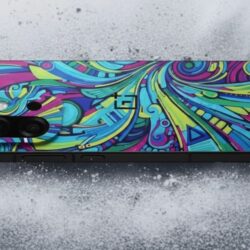In modern packaging operations, shrink film bundling equipment plays a vital role in securely wrapping and protecting products for transport and retail display. However, one often overlooked factor that directly influences the performance and reliability of this equipment is the specification of the shrink film itself. Selecting the wrong film type, thickness, or formulation can lead to production inefficiencies, equipment wear, and even product damage. This article explores the key shrink film bundling equipment specifications and how each impacts equipment operation, productivity, and overall packaging quality.
Understanding Shrink Film and Its Role in Bundling
Shrink film is a polymer-based material that contracts when exposed to heat, creating a tight and protective seal around the product bundle. It is commonly used across industries such as food and beverage, pharmaceuticals, and consumer goods. The shrink film bundling equipment typically applies heat through tunnels or sealers to activate the film’s shrink properties, ensuring products are held securely together.
Different types of shrink films are available, including polyethylene (PE), polyolefin (POF), and polyvinyl chloride (PVC). Each material type offers unique characteristics suited to specific applications. For instance, PE films are often used for bundling heavier items like beverage cans or bottled water, while POF provides excellent clarity and strength for retail packaging.
Key Shrink Film Specifications That Affect Equipment Performance
1. Film Thickness
Film thickness, usually measured in microns or mils, directly impacts the strength, flexibility, and shrink characteristics of the material. Thicker films offer greater durability and puncture resistance, making them ideal for heavy or irregularly shaped products. However, using a film that is too thick for the equipment can result in poor sealing, incomplete shrinking, and excess material use.
On the other hand, films that are too thin may tear during the sealing process or fail to maintain adequate tension around the product. Optimizing film thickness for the product type and bundling equipment capacity is essential for efficient operation.
2. Shrink Ratio and Orientation
The shrink ratio indicates how much the film will contract when heat is applied. Films are typically oriented either mono-directionally (one direction) or bi-directionally (both directions) during manufacturing. Bi-directional films ensure uniform shrinking, producing tighter and more consistent bundles.
An incorrect match between the film’s shrink ratio and the equipment’s tunnel temperature can lead to issues such as uneven shrinking, product distortion, or wrinkling. Therefore, operators must calibrate tunnel temperatures and conveyor speeds to align with the film’s designed shrink ratio.
3. Sealability and Slip Characteristics
The seal layer of a shrink film determines how easily it forms secure seals during the wrapping process. Films with poor sealability may cause weak joints or inconsistent seals, leading to open packages or film breakage.
Slip characteristics, defined by the coefficient of friction (COF), affect how smoothly the film travels through shrink film bundling equipment. Films with too much slip can slide excessively, making alignment difficult, while films with too little slip may stick to machine components, causing jams. Selecting films with balanced slip levels enhances feeding, sealing, and wrapping consistency.
4. Clarity and Gloss
In retail packaging, visual presentation is crucial. Films with high optical clarity and gloss enhance the appearance of bundled products and improve shelf appeal. However, clarity can also impact heat distribution. High-clarity films often require precise heat control to avoid haze or film burn. Proper equipment calibration ensures that clarity is maintained without compromising shrink performance.
5. Shrink Force and Tensile Strength
Shrink force refers to the amount of pressure the film applies to the product as it contracts. Films with high shrink force are beneficial for securing heavy or unstable loads but may deform lightweight or fragile items. Conversely, low-shrink-force films are ideal for delicate products but may not provide sufficient bundle integrity for larger goods.
Matching shrink force and tensile strength to the product’s physical characteristics ensures stable and visually appealing packaging. Many manufacturers test various film formulations with their shrink film bundling equipment to identify the optimal balance between containment and product protection.
The Relationship Between Film Quality and Equipment Efficiency
High-quality films with consistent specifications reduce downtime, maintenance, and material waste. Inferior or inconsistent films can lead to frequent machine stoppages, seal failures, and poor shrink appearance. Investing in films that are engineered for compatibility with specific bundling systems results in smoother operation and extended equipment lifespan.
Moreover, modern automated systems rely heavily on consistent film behavior to synchronize sensors, heat tunnels, and conveyors. Even small variations in film thickness or slip properties can disrupt timing and increase the need for operator intervention. By maintaining strict control over film quality, manufacturers can ensure that their shrink film bundling equipment performs at maximum efficiency.
Sustainability Considerations in Shrink Film Selection
As sustainability becomes a key focus across packaging industries, film manufacturers are developing thinner, recyclable, and biodegradable options that still deliver high performance. Using lightweight yet durable films can reduce material consumption and energy use during shrinking. Choosing eco-friendly materials also aligns with corporate environmental goals without compromising equipment productivity.
Conclusion
Understanding how shrink film specifications influence shrink film bundling equipment performance is essential for achieving reliable, efficient, and visually appealing packaging. Each factor—from thickness and shrink ratio to sealability and clarity—plays a role in determining output quality and operational consistency. Ultimately, the right film choice not only enhances packaging performance but also improves overall cost-effectiveness in any machine shrink wrap operation. By selecting the right film for specific applications and maintaining proper equipment calibration, businesses can optimize throughput, minimize waste, and extend the life of their machinery.



